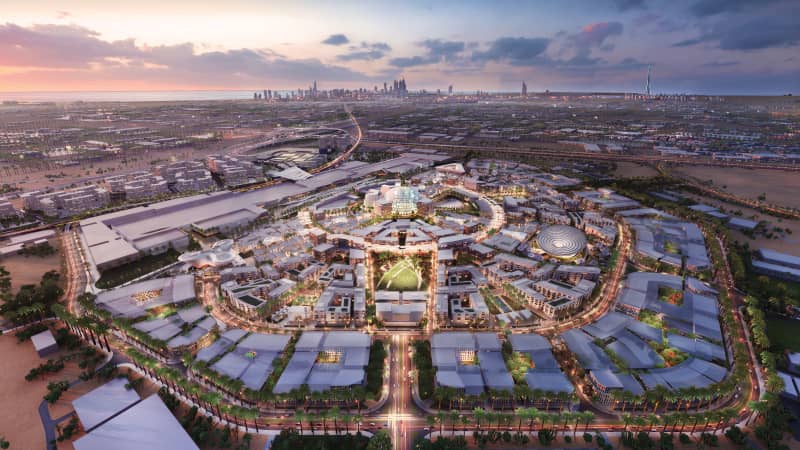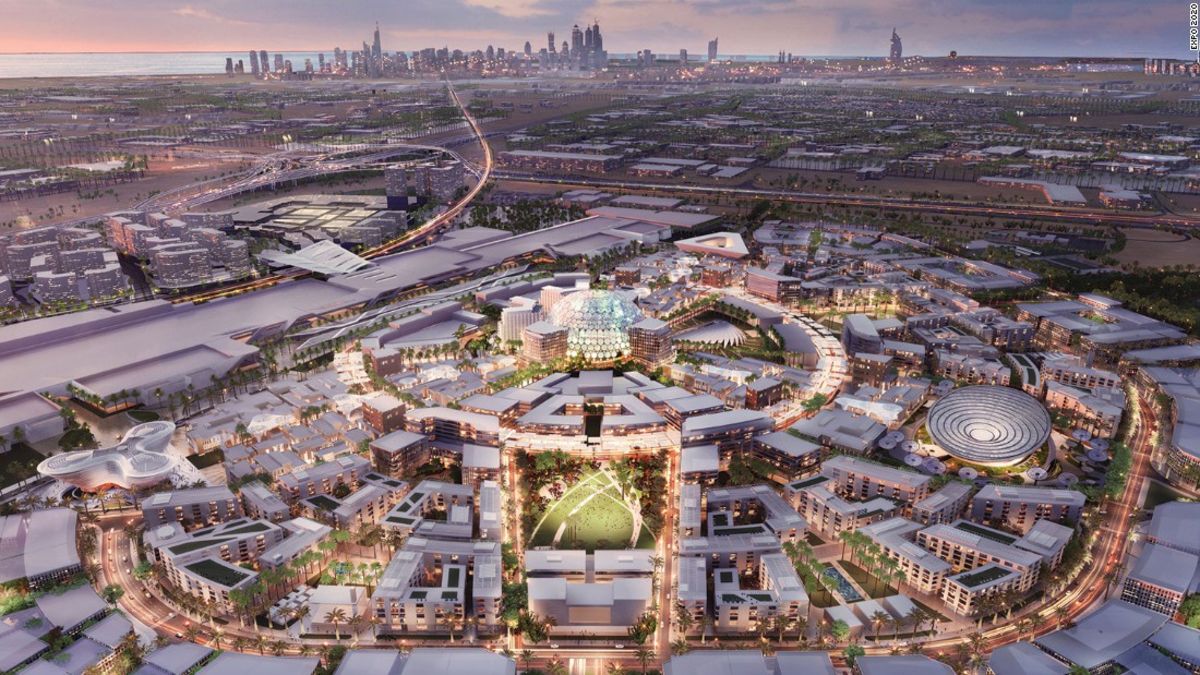Products You May Like
All systems are go as Dubai gears up for the grand spectacle of Expo 2020.
After six years of preparation and around $8 billion of investment, we are just one year from showtime: October 20, 2020.
The six-month showcase of innovation is expected to draw 25 million visitors, with 192 countries represented, and if history is a guide the impact could be much longer-lasting.

Rendering of the 1,080-acre Expo 2020 site in Dubai.
Expo 2020
‘The works of all nations’
The Expo — sometimes referred to as a World Fair — was conceived as an international exhibition to showcase the best of every nation, with an emphasis on innovation, technology, and architecture.
The first edition was held in London in 1851 with the title: “Great Exhibition of the Works of Industry of All Nations.”
The event was dominated by the treasures of the host nation, and the network of colonies Britain then held power over. But France, Russia, the US, and Chile were also represented, sending jewels, tools, and ornaments for display.
The grand exhibitions have been held ever since at regular intervals – now settled into a five-year cycle — with an ever-expanding network of host nations and participants.

The Great Exhibition in Crystal Palace, 1851.
Hulton Archive/Hulton Archive/Getty Images
Inventions and legacies
Expos have often been the stage for audacious inventions to be revealed to the public, many of which have stood the test of time.
London 1851 saw the debut of vulcanized rubber for the creation of tyres, and an early form of the fax machine.
Philadelphia 1876 saw the introduction of the telephone and one of the earliest typewriters. Paris 1900 gave us the diesel engine and the first movie with sound.
The events have often reshaped their host cities and introduced new landmarks. The Eiffel Tower was unveiled for Paris 1889 — to heavy derision at the time — and Seattle 1962 produced the city’s iconic Space Needle.
“One measure of a successful Expo is whether it has a societal impact in urban planning,” says Jennifer Minner, associate professor in city and regional planning at Cornell University, and a specialist in the history of Expos.
Seattle offers one of the more positive examples, Minner believes, noting that it bequeathed a “successful civic space with institutions like the Pacific Science Center and beautifully preserved architecture,” as well as a legacy of public transport improvements.
The academic adds that other editions have more controversial legacies, such as Milan 2015, marred by construction delays, overspending, and malfunctioning canals.
High hopes
Expos have expanded in scope and scale since the grand exhibitions of the 19th century.
Dubai’s ambition for 2020 can be seen in the 1,000-acre site and the bold choice of theme: “Connecting Minds, Creating the Future.”
Organizers are anticipating lasting gains from the event, projecting an economic dividend of more than $33 billion and the creation of more than 900,000 jobs by 2031.
Innovations in sustainable living represent a worthy target – and justification – for Expos deep into their third century, says Minner.
“These events…need to be real models for how we live rather than being just about touring technologies” she says.
Many burning questions remain as to what will be revealed at Expo 2020 and what the overall impacts will be.
And those questions will begin to be answered one year from now.

